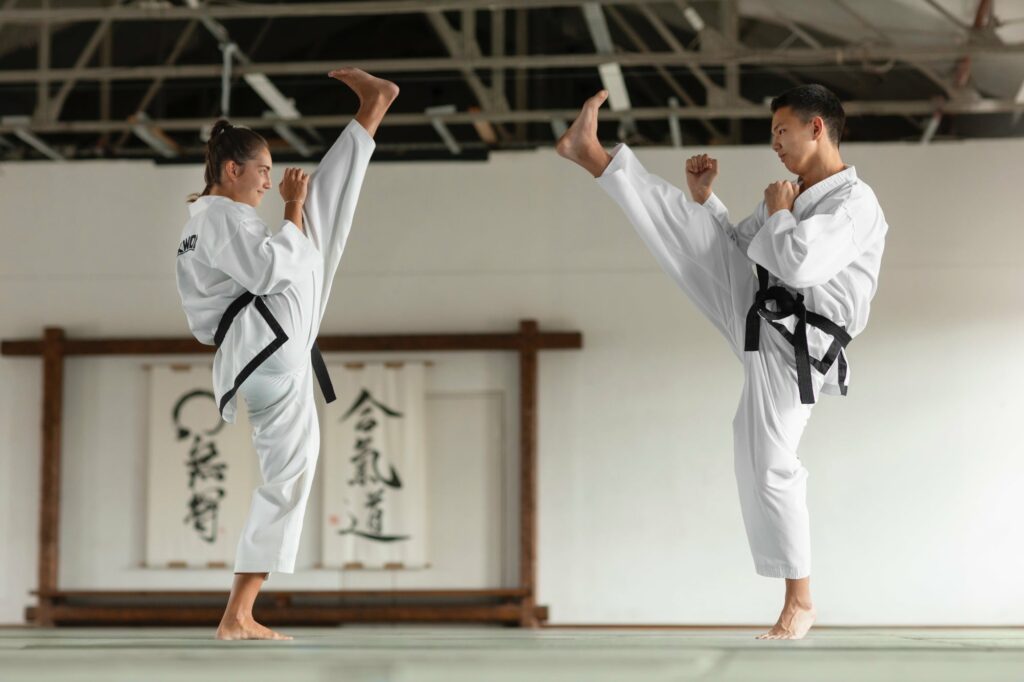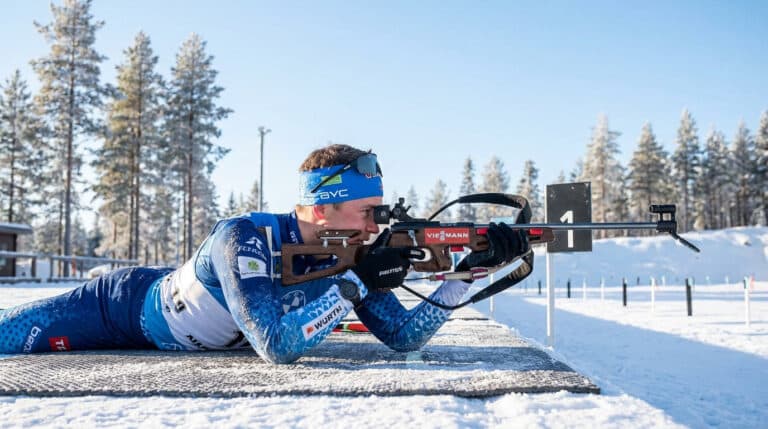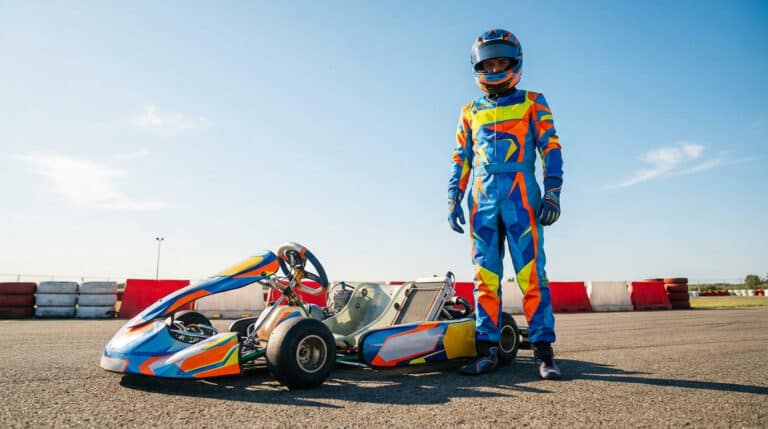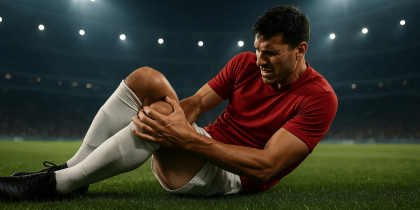Full-contact karate, also known as kickboxing or contact karate boxing, is an internationally recognized combat sport that is particularly popular in France and worldwide. It combines sophisticated foot and hand techniques inspired by traditional martial arts. This demanding discipline, regulated in France by the French Karate Federation and recognized by international federations, emphasizes real combat, requiring high technical precision and solid physical preparation.
Kickboxing and boxing matches typically take place in a ring, requiring exceptional physical conditioning as well as mastery of dodging and movement techniques to avoid getting trapped against the ropes. Full-contact karate emerged in the United States in the 1960s and 1970s as an evolution of martial arts disciplines of that era, focusing on powerful striking techniques and integrating into the rich world of martial arts.
In this article, we will explore the main risks of full-contact karate, the essential protective gear to use, and the best practices to ensure safe training and competition in this combat sport.
Identifying the risks of Full-Contact Karate
Common Injuries
Within martial arts and combat sports, full-contact karate exposes practitioners to various injuries during matches, including:
- Sprains and fractures: Mainly affecting wrists, hands, fingers, ankles, and knees, caused by repeated impacts during boxing and kickboxing rounds.
- Muscle injuries: Such as strains, elongations, and tears, often due to insufficient warm-up or overuse in martial arts combat techniques.
- Bruises and contusions: Inevitable consequences of punches and kicks in competition or training, including grappling and boxing practices.
- A wide range of techniques used in full-contact karate, including circular strikes like hooks and roundhouse kicks, requires particular attention to minimize the risk of serious injury.
Risks associated with strikes
The striking techniques in full-contact karate and kickboxing allow for powerful hits to the body and head, using circular strikes, hooks, and roundhouse kicks, which can lead to:
- Concussions and facial injuries: Affecting the eyes, ears, and nose during hand-to-hand exchanges in international competitions.
- Severe injuries caused by prohibited techniques, such as uppercuts to a bent opponent or excessive circular strikes, which are closely monitored by sports federations.
- The practice sometimes incorporates grappling and ground fighting techniques, requiring knowledge of a broad range of martial arts beyond traditional karate to reduce the risk of injury.
Long-term consequences
Practicing full-contact karate intensively can lead to long-term conditions, such as:
- Hip osteoarthritis due to repetitive single-foot movements, common in martial arts like kickboxing.
- Knee tendinitis caused by the repeated kicking and impacts during competitions.
Rules and regulations in Full-Contact Karate
Full-contact karate follows strict rules established by the French Karate Federation (FFKDA) and other international federations. These rules, aligned with the standards of boxing and combat federations, aim to ensure fair competition and minimize the risk of injuries. For example, some variations like light-contact karate or semi-contact karate focus on controlled touches and prohibit knockouts, in compliance with national sports commission guidelines.
Categories and scoring system
In competitions, fighters are classified by weight category and skill level (amateurs, professionals) according to the national federation’s regulations. The scoring system is based on:
- Controlled punches and kicks: Points awarded based on the accuracy and impact of punches and kicks, fundamental to kickboxing and boxing.
- Prohibited dangerous techniques: Strikes to the back of the head, knee strikes, and other non-regulated combat techniques banned by sports federations.
- Match duration: 3 to 5 rounds depending on the category, with strict enforcement of competition rules. A panel of trained referees ensures compliance to maintain a safe competition environment at national and international levels.
Specifics of ring combat
Unlike full-contact karate on tatami mats, full-contact karate competitions take place in a ring, following international combat sports standards. This requires fighters to master movement and dodging techniques and maintain a solid defense to avoid being trapped against the ropes. Training in the ring emphasizes physical conditioning and movement, without the referee stopping the action, ensuring a continuous and strategic fight.
Full-Contact Karate clubs and federations in France
If you want to practice full-contact karate, it is essential to join a club recognized by national and international federations and specialized martial arts associations. Some key organizations in France include:
- French Karate Federation (FFKDA): Governs full-contact karate competitions and training. The FFKDA organizes competition calendars for all categories, including full contact, light contact, and semi-contact, coordinating with international federations.
- Some clubs also offer Karate Mix sessions, combining various combat styles such as grappling and kickboxing to enhance training and reach different belt levels.
- Specialized associations in kickboxing and full contact, affiliated with international federations, offering a broad range of martial arts disciplines.
To find a club near you, consult national federation directories or visit the official websites of different sports commissions and affiliated associations.
Essential protective gear for Full-Contact Karate
Head and face rotection
A protective helmet is essential to minimize the risk of head injuries during full-contact karate and kickboxing matches. There are two main types of helmets used in this sport:
- Full-face helmets: Covering the entire face and chin, offering maximum protection during international full-contact karate and kickboxing competitions.
- Open-face helmets: Providing better ventilation and improved vision during training and local competitions organized by sports federations.
Body protection
Torso protection is crucial for absorbing the impact of punches and kicks in combat sports such as full-contact karate and boxing. Recommended equipment includes:
- Chest protectors for women and groin guards for men, essential in boxing, full-contact karate, and other martial arts disciplines.
- Boxing gloves designed specifically for combat sports like kickboxing, providing optimal protection and dexterity.
- Shin guards to prevent injuries during leg strikes. It is also advisable to use protective foot gear during martial arts training for maximum safety.
Mouthguards and additional accessories
A mouthguard is indispensable to protect the teeth, gums, and jaw from powerful impacts in full-contact karate and boxing matches. Other essential protective gear includes:
- Hand wraps to stabilize wrists and fingers, crucial for both offense and defense in combat sports like full-contact karate.
- Combat shoes designed for martial arts to improve grip and prevent slipping during fast movements.
Full-Contact Karate: Ready to get started?
Full-contact karate is a demanding martial art that requires careful preparation and proper protective gear to ensure the safety of practitioners during fights and training. Competitive events, organized by French and international sports federations, are highly structured. A key aspect of full-contact karate is technical and mental preparation as well as strict adherence to established rules, both physically and strategically.
Ready to take up full contact karate or other martial arts disciplines? Find a club affiliated to a national or international federation, equip yourself properly with the right protective gear and comply with the safety rules to get the most out of this demanding, international sport! Find out about our full contact karate insurance for extra peace of mind on and off the tatami.
For more information on training clubs, belt rankings, and competitions, visit the French Karate Federation website or check with official martial arts organizations.






